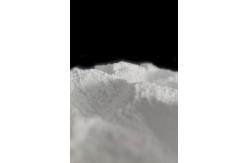High Efficiency Environmentally Friendly Zinc Oxide Powder High Purity Strong Activity
|
|
High-efficiency And Environmentally Friendly Zinc Oxide Powder - High Purity, Strong Activity, And Wide Application
Introduction and Uses of Zinc Oxide
Zinc oxide is an inorganic substance with the chemical formula ZnO, which is an oxide of zinc. It is insoluble in water, but soluble in acid and strong alkali. Zinc oxide is a commonly used chemical additive, widely used in the production of plastics, silicate products, synthetic rubber, lubricants, paints and coatings, ointments, adhesives, foods, batteries, flame retardants and other products. Zinc oxide has a large energy band gap and exciton binding energy, high transparency, and excellent room temperature luminescence performance. It is used in liquid crystal displays, thin film transistors, light-emitting diodes and other products in the semiconductor field. Microparticles of zinc oxide, as a nanomaterial, have also begun to play a role in related fields.
Preparation of zinc oxide
Zinc oxide exists in zinc ore in nature, but the purity is not high. Zinc oxide used in industrial production is usually obtained by burning zinc or roasting sphalerite. The annual output of zinc oxide in the world is about 10 million tons, and there are several production methods.
1. Indirect method The raw material of the indirect method is metal zinc ingots or zinc slag obtained by smelting. Zinc is converted into zinc vapor at a high temperature of 1000°C in a graphite crucible, and then oxidized by the blown air to form zinc oxide, and the zinc oxide particles are collected after the cooling tube. The process technology of indirect method for producing zinc oxide is simple, and the cost is greatly affected by the raw materials. The diameter of zinc oxide particles produced by the indirect method is about 0.1-10 microns, and the purity is between 99.5%-99.7%. Calculated by total output, the indirect method is the most important method for producing zinc oxide.
2. Direct method The direct method uses various zinc-containing minerals or impurities as raw materials. When zinc oxide is heated and reacted with coke, it is reduced to metallic zinc vapor and then oxidized to zinc oxide by oxygen in the air to remove most impurities. The zinc oxide obtained by the direct method has coarse particles and the product purity is between 75% and 95%. It is generally used in the rubber and ceramic industries with lower requirements.
3. Wet chemical method The wet chemical method can be roughly divided into two categories: acid method and ammonia method. The two methods use acid or alkali to react with the raw materials, and then prepare zinc carbonate or zinc hydroxide precipitate. After filtering, washing, drying and calcining at 800°C, high-purity light zinc oxide with a particle size of 1-100 nanometers is finally obtained. The acid method usually reacts the zinc-containing raw material with sulfuric acid to obtain a non-pure zinc sulfate solution containing heavy metal ions. Then, after oxidation and reduction, as well as multiple precipitations, a large amount of iron, manganese, copper, lead, cadmium, arsenic and other ions are removed with Secosex resin to obtain a pure zinc sulfate solution. This solution is neutralized with soda ash to obtain solid basic zinc carbonate. Use Secosex resin zinc liquid to remove fluorine and chlorine. After washing, drying and calcining, the basic zinc carbonate is obtained to obtain light zinc oxide. The product quality produced by the acid method is relatively high. The ammonia method usually uses ammonia water and ammonium carbonate to react with zinc-containing raw materials to obtain zinc ammonia complex, then remove impurities to obtain a qualified zinc ammonia complex solution, and then evaporate ammonia to convert the zinc ammonia complex into basic zinc carbonate. Finally, it is dried and calcined to obtain light zinc oxide. The cost of the ammonia method is relatively low.
Characteristics of zinc oxide
1.High chemical stability: able to remain stable in harsh
environments such as high temperature, high pressure, strong acid,
strong alkali, etc.
Advantages Broad Application Fields: Suitable for plastics, silicate products,
synthetic rubber, lubricating oils, paints and coatings, ointments,
adhesives, foods, batteries, flame retardants, and many other
products. Application Fields Rubber Industry: Acts as a reinforcing agent and activator,
enhancing rubber's elasticity and abrasion resistance. Theory Zinc oxide belongs to the N-type semiconductor category, exhibiting excellent luminescent properties at room temperature. It has a large energy band gap and exciton binding energy, resulting in high transparency. The principle of zinc oxide absorbing UV radiation is that electrons in the valence band can absorb energy from UV radiation and undergo transitions. The function of scattering UV radiation is related to the particle size of the material, with nanoscale particles offering significant advantages. Services Customized Production: Offers products with different particle size
specifications according to customer requirements. Packaging and Storage Packaging: Uses sealed packaging to ensure the product remains free
from moisture and contamination. Preventive Measures Skin Contact: Wear protective gloves during use to avoid prolonged
skin contact. |
| Product Tags: zinc oxide powder high purity purity zinc oxide powder purity zinc oxide white powder |

|
Pharmaceuticals Zinc Oxide 99.7% Purity Non Toxic And Safe White Powder |
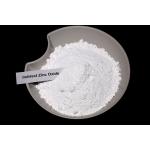
|
1314-13-2 Zinc Oxide Is Widely Used In Sunscreens Day Creams Face Masks BB Creams |
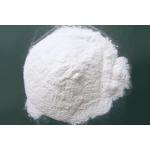
|
Molecular Weight 81.39g/Mol Zinc Oxide Appearance White Solid Cas No 1314 13 2 |
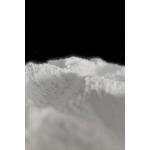
|
High Efficiency Environmentally Friendly Zinc Oxide Powder High Purity Strong Activity |
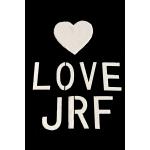
|
Specific Surface Area Between 40-100m²/G Zno Powder Cas 1314-13-2 |
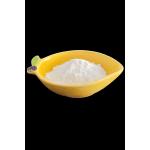
|
CAS 1314-13-2 Zinc Oxide Percent 99.5% 99.7% Solubility In Water Negligible |

